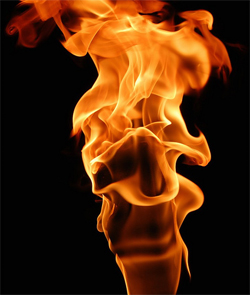Spontaneous Combustion
KNB0033
A look at Spontaneous Combustion, what is it and how does it occur???

03/06/2010 12:18:15
Spontaneous Combustion occurs when a material or substance ignites in the absence of a flame or other ignition source. Materials of this kind represent a very serious fire risk and the methodology of handling and disposal requires extreme care.
Which materials can spontaneously combust?
Common examples include linseed oil, peroxides, drying oils and alkyd resins /alkyd resin paints. Some HMG products, such as Coach Enamel, C71 and K-Type Enamel, as well as products from other manufacturers, contain materials that could possibly undergo spontaneous combustion.
What is the process by which spontaneous combustion occurs?
Materials such as those listed above have a low auto-ignition temperature. Oxidation through contact with air can generate sufficient heat to exceed the ignition temperature of rags, spray booth filters or other combustible materials on which these substances are deposited, causing them to spontaneously catch fire.
What is the most common cause of spontaneous combustion?
It usually occurs when rags, spray booth filters and other materials soaked with linseed oil, peroxides, drying oils or alkyd resin paints are not handled or disposed of in the correct manner.
What is the safe method of handling and disposal?
Contaminated rags, spray booth filters or other substrates should be segregated from other chemical waste, soaked with water and disposed of in a non-combustible container with a tight-fitting lid.